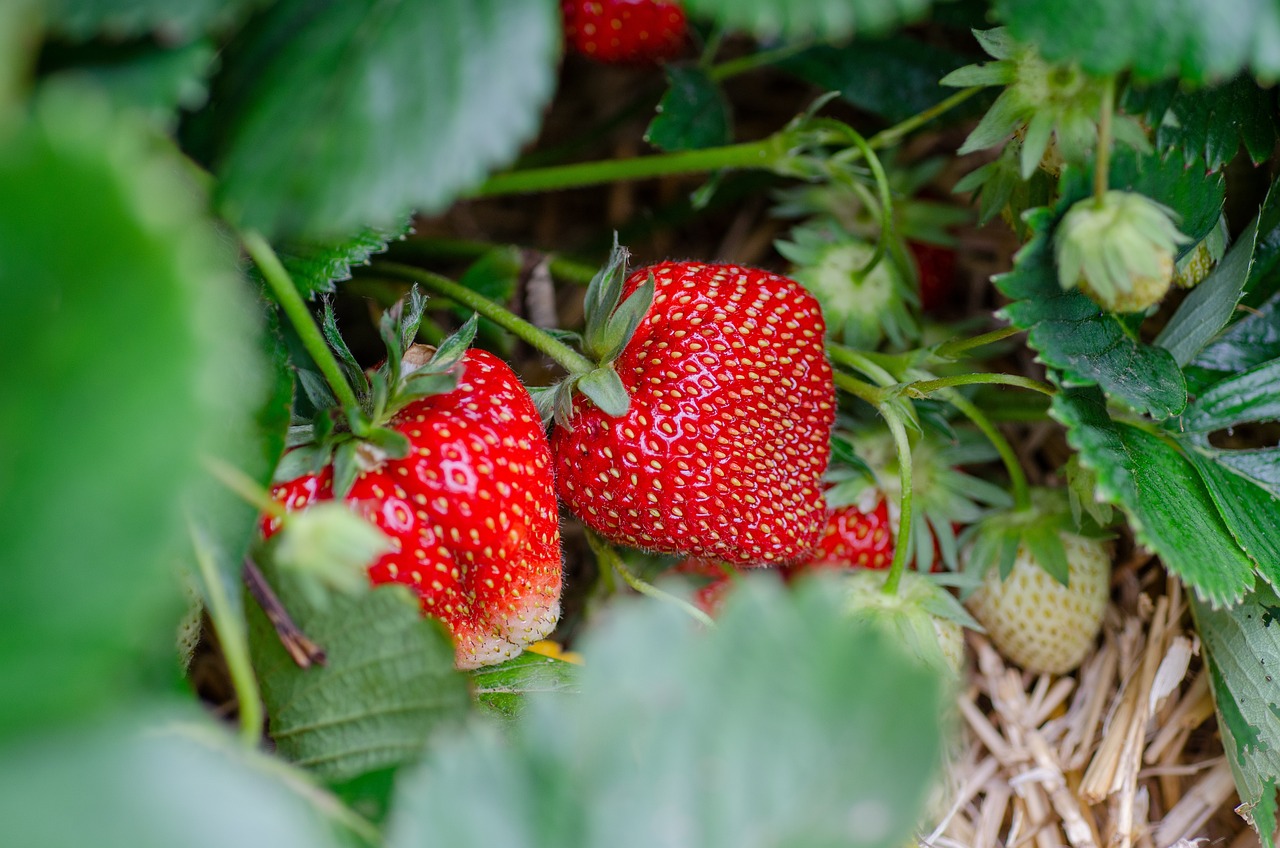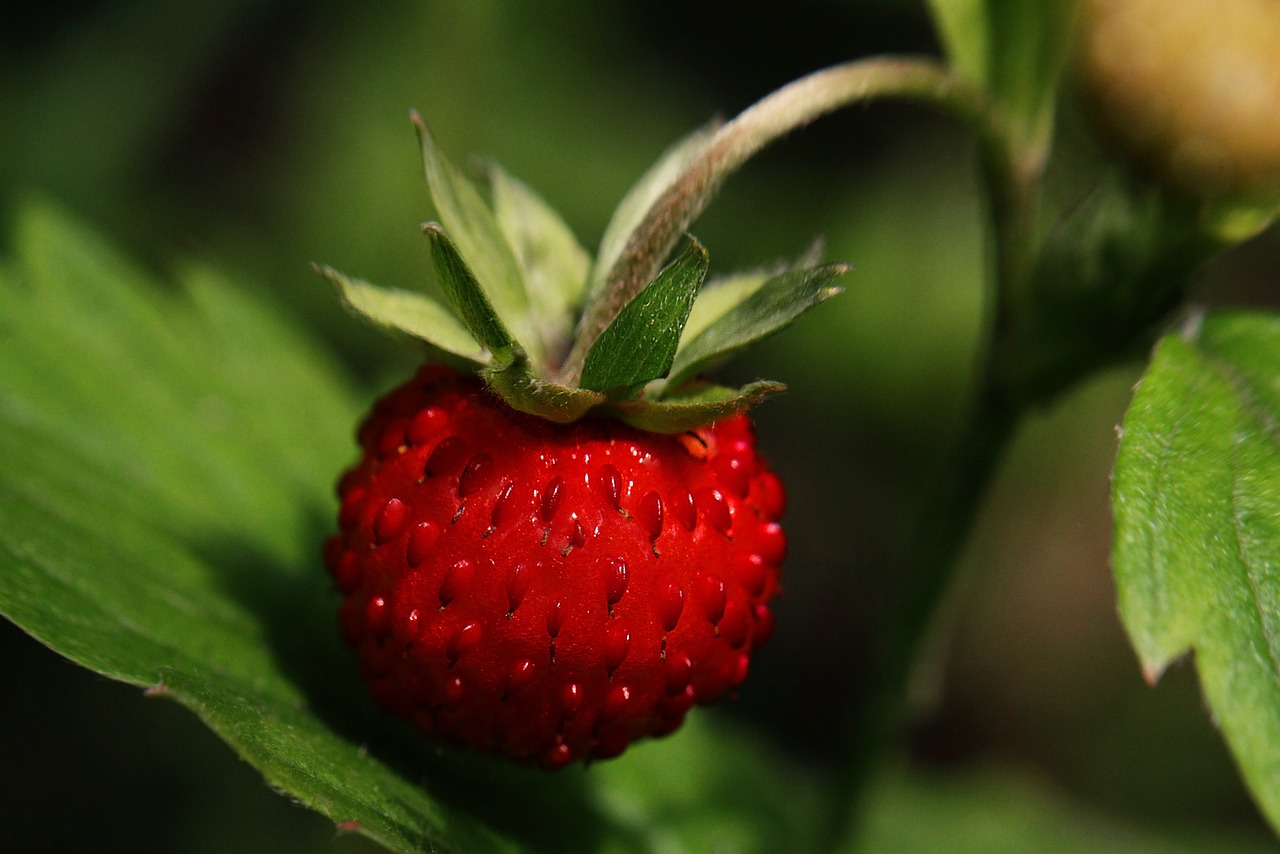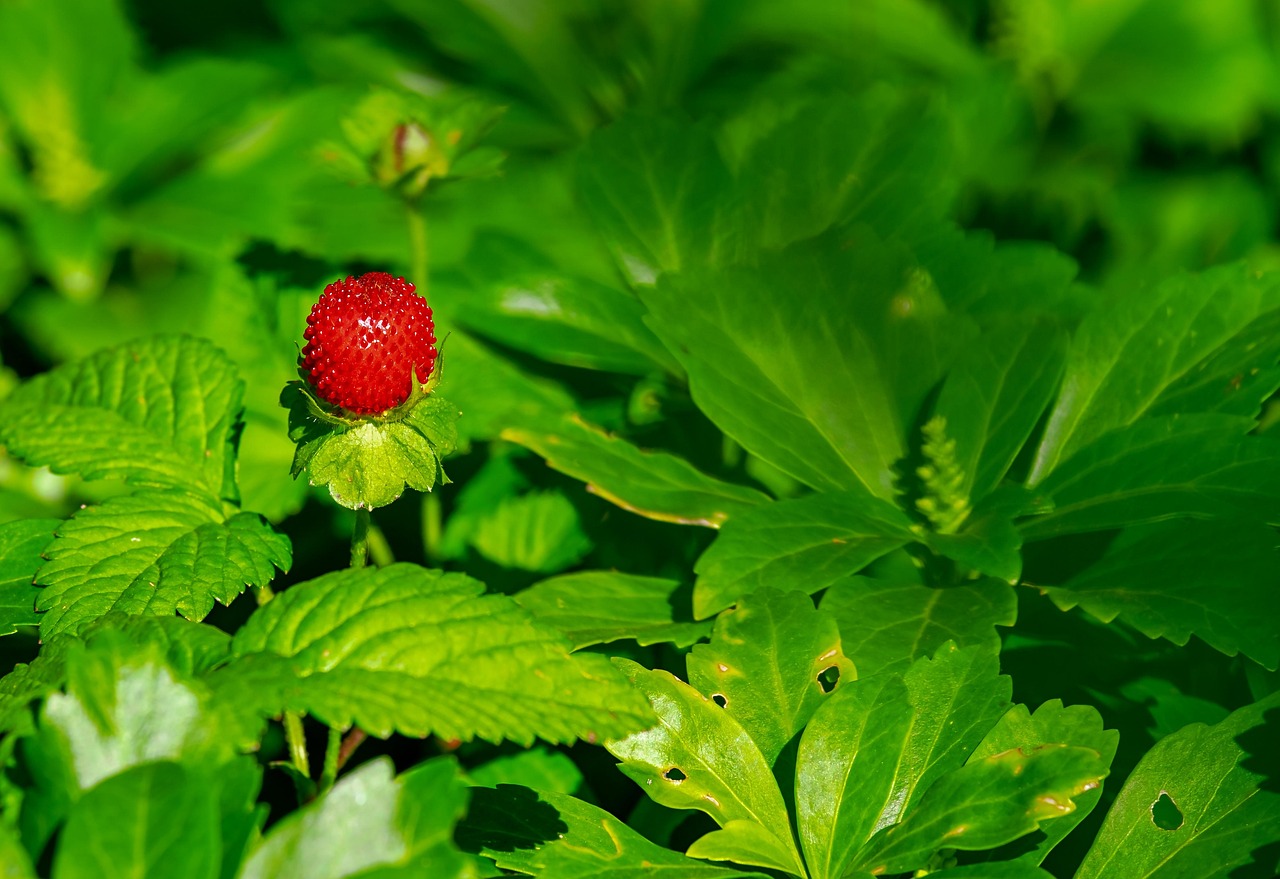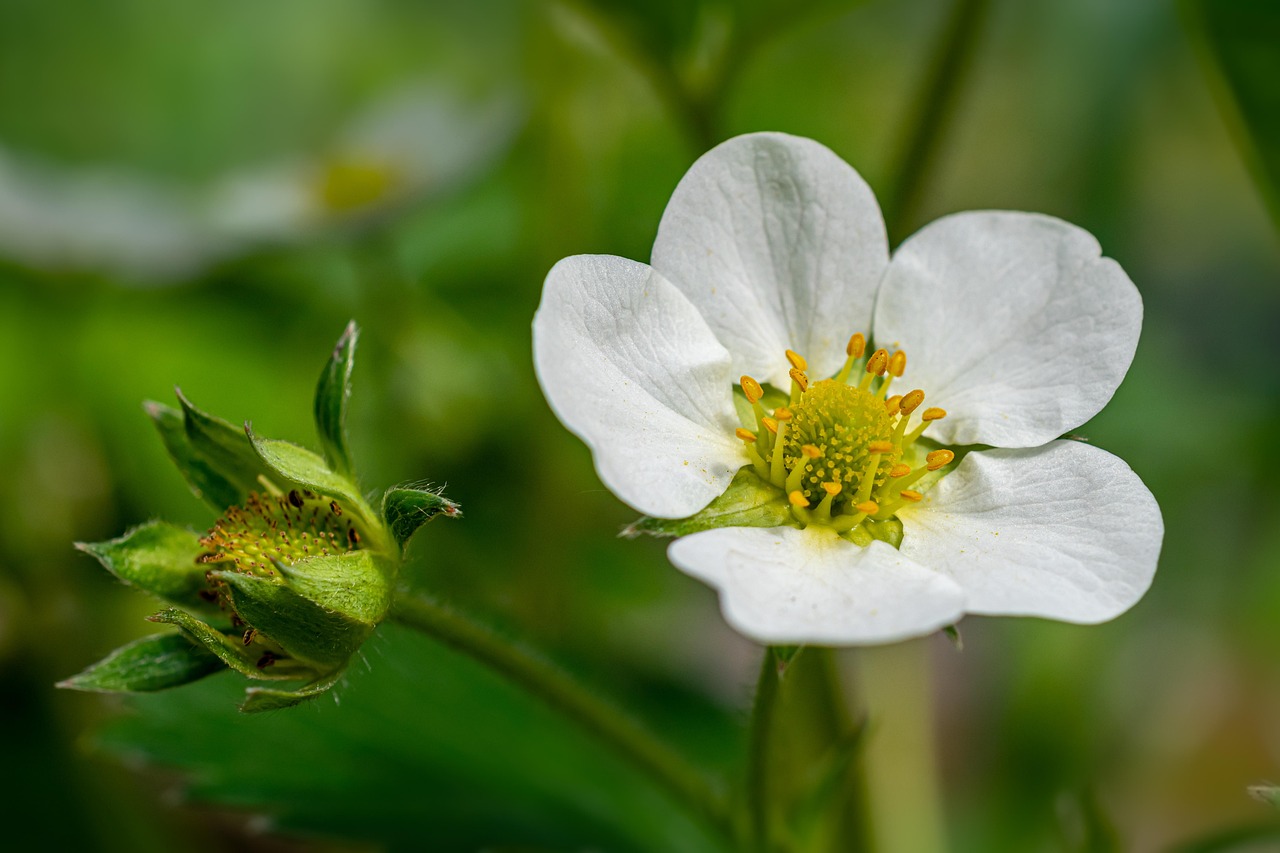Winterizing strawberry plants is essential for their survival through colder months. Proper protection methods include mulching, using row covers, and ensuring adequate watering before frost sets in. These steps will help maintain plant health and promote vigorous growth in the spring.
Understanding Strawberry Plants

Strawberry plants, known for their delicious fruits, are sensitive to cold temperatures. They are perennials, meaning they can live for several years if properly cared for. However, during winter, the risk of frost damage increases. Understanding how to effectively winterize these plants can be crucial for gardeners who wish to enjoy a bountiful harvest year after year.
There are several types of strawberry plants, including June-bearing, everbearing, and day-neutral varieties. Each type has specific needs, but all require protection from the harsh winter elements. In colder climates, strawberries can suffer from freeze-thaw cycles, which can damage roots and crowns. Taking preventative measures is key to ensuring that your strawberry plants thrive in the warmer months.
Why Winterizing is Important
Winterizing your strawberry plants not only helps them survive but also promotes healthier growth in the spring. Here are some critical reasons why winterization is essential:
- Prevent Frost Damage: Protecting the plants from freezing temperatures can help preserve the crown and root systems.
- Reduce Moisture Loss: Mulching helps retain soil moisture during dry winter months.
- Encourage Early Growth: A well-winterized plant can start growing earlier in the spring season.
- Minimize Pest Issues: Proper care can reduce the risk of pests and diseases that may thrive in neglected plants during winter.
Best Practices for Winterizing Strawberry Plants
To effectively winterize strawberry plants, follow these best practices:
- Clean Up your Garden: Remove any old fruit, dead leaves, or debris to prevent pests and disease in the spring.
- Water Thoroughly: Make sure the soil is moist before the first frost. This helps protect roots from freezing.
- Apply Mulch: Use straw, shredded leaves, or pine needles to cover the plants. A 3-4 inch layer will provide good insulation.
- Use Row Covers: Lightweight fabric can protect plants from extreme temperatures while allowing sunlight and moisture in.
- Monitor Weather Conditions: Stay aware of local weather forecasts to take timely action if temperatures drop unexpectedly.
| Winterizing Method | Benefits |
|---|---|
| Mulching | Insulates roots and retains moisture |
| Row Covers | Protects from extreme cold and frost |
| Watering | Prevents dehydration and root damage |
By following these practices, you can ensure that your strawberry plants remain healthy and strong throughout the winter months. With proper care, they will be ready to produce luscious berries when spring arrives.
Timing for Winterization
Winterizing strawberry plants is not only about the methods you choose but also about the timing of these actions. The right timing can significantly enhance the effectiveness of your winterizing efforts. Here are some key points to consider regarding when to start preparing your plants for winter.
- Late Fall Preparation: Begin winterizing your strawberry plants in late fall, typically after the last harvest. In most regions, this is around mid to late October, depending on your local climate.
- First Frost Awareness: Monitor local weather forecasts for the first expected frost. It is crucial to complete winterizing tasks before the ground freezes to ensure proper protection.
- Soil Temperature Check: Aim to winterize when soil temperatures drop below 50°F (10°C). This temperature indicates that the plants are entering dormancy, making them less susceptible to damage.
Choosing Mulch Wisely
Mulching is a vital part of winterizing strawberry plants. However, not all mulches are created equal. Choosing the right type of mulch can impact the effectiveness of your winter protection. Here are some popular options and their benefits:
- Straw: One of the most common mulches, straw provides excellent insulation and allows for air circulation. It is lightweight and easy to apply.
- Pine Needles: These provide good insulation and acidity, which can be beneficial for strawberry plants. They are also less likely to mat down compared to other materials.
- Shredded Leaves: Leaves are a readily available option. They decompose over time, adding organic matter to the soil. However, ensure they are shredded to prevent matting.
- Wood Chips: While they insulate well, wood chips can take longer to break down and may not provide as much immediate benefit as other types of mulch.
Protection Techniques Beyond Mulching

In addition to mulching, other techniques can enhance the protection of your strawberry plants during winter. Implementing a combination of strategies will yield the best results.
Row Covers
Row covers serve as an additional layer of protection against cold temperatures and harsh weather conditions. They trap heat and can create a more favorable microclimate for your plants.
- Lightweight Fabric: Use breathable fabric to allow sunlight and moisture to reach your plants while still protecting them from frost.
- Secure Installation: Ensure that row covers are securely anchored to prevent them from blowing away during windy conditions.
- Ventilation Considerations: On warmer winter days, remove or lift the covers to prevent overheating and promote air circulation.
Watering Techniques
A well-hydrated soil environment is crucial for winterizing strawberry plants. Adequate watering before the frost can help protect plant roots from freezing damages. Here are some tips for effective watering:
- Deep Watering: Water thoroughly to ensure deep soil moisture. This will help maintain hydration levels as colder temperatures set in.
- Avoid Overwatering: Ensure that soil drains well. Overly saturated soil can lead to root rot and other issues.
- Timing: Water your plants in the morning or early afternoon. This allows excess moisture to evaporate before nighttime temperatures drop.
By implementing these timing strategies and protective techniques, you can significantly enhance the chances of your strawberry plants surviving winter and thriving in spring.

Identifying and Protecting Plant Vulnerabilities
While winterizing strawberry plants, it is essential to identify specific vulnerabilities that may affect their survival. Recognizing the parts of the plant that are most susceptible to cold can guide how you protect them effectively. Here are some key areas to focus on:
Crown Protection
The crown of the strawberry plant is the most critical part to protect during winter. It is responsible for producing new leaves and flowers in the spring. Here are some tips for safeguarding the crown:
- Mulch Application: Ensure that the mulch layer is thick enough to cover the crown completely. This will provide insulation against freezing temperatures.
- Monitor Mulch Depth: Check the mulch periodically. If it compresses or washes away, replenish it to maintain adequate coverage.
- Frost Cloths: In areas prone to extreme cold, consider using frost cloths over the mulch for added protection against frost damage.
Root System Care
The root system is essential for nutrient uptake and overall plant health. Protecting the roots from freezing temperatures is vital for ensuring healthy growth in spring.
- Soil Quality: Healthy soil is crucial for root protection. Ensure you have well-aerated, nutrient-rich soil that drains well to prevent water accumulation.
- Mulch Around Roots: Extending mulch further out from the crown helps insulate the root zone, providing additional protection from cold.
- Regular Watering: As previously mentioned, maintaining adequate moisture levels will keep the roots hydrated and less susceptible to freezing.
Dealing with Pests and Diseases in Winter
Winter can introduce a variety of pests and diseases that threaten strawberry plants. Taking proactive steps can minimize these risks and ensure a healthy start when spring arrives.
Pest Awareness
Some pests may seek shelter in strawberry plants during winter months. Being aware of these threats can help you take appropriate actions.
- Slugs and Snails: These pests can cause damage even in winter. Consider placing traps or barriers around your plants to deter them.
- Aphids: These small insects can survive milder winters. Inspect your plants regularly and remove any affected leaves or stems.
- Rodents: Mice and voles may be attracted to strawberry plants for food. Use protective barriers or traps to keep them at bay.
Disease Prevention
Diseases can also be a concern during winter months. Implementing preventive measures will help keep your plants healthy.
- Sanitation: Clean up any fallen leaves or plant debris that could harbor diseases. This will reduce the chances of fungal infections developing over winter.
- Healthy Plants: Only winterize healthy plants. If you notice any signs of disease, such as wilting or discoloration, treat them before winterizing.
- Pesticide Application: Consider applying organic pesticides before winter sets in to minimize pest populations that could affect your plants.
Preparing for Spring Growth

Once winter ends, it is essential to prepare your strawberry plants for a vigorous growing season. The steps you take during winter directly influence how your plants respond when temperatures rise.
- Gradual Exposure: As temperatures start to warm up, gradually remove protective coverings like row covers to acclimate your plants to sunlight and air.
- Spring Fertilization: Once the danger of frost has passed, consider applying a balanced fertilizer to promote healthy growth and fruit production.
- Pest Monitoring: Continue monitoring for pests and diseases throughout early spring to address any issues promptly.
By focusing on these aspects, you can enhance the resilience of your strawberry plants throughout winter and foster robust growth as they emerge in spring.
Additional Tips for Successful Winterization
In addition to the primary methods discussed, there are several other strategies that can enhance the winterization process for strawberry plants. These tips can provide further protection and ensure that your plants are prepared for the challenges of winter.
Soil Amendments
Enhancing soil quality before winter can have lasting effects on plant health. Consider the following:
- Organic Matter: Adding compost or well-rotted manure can improve soil structure and fertility. This will not only benefit your plants during winter but also promote better growth in spring.
- pH Levels: Testing and adjusting the pH level of your soil can help ensure that nutrients are available for your strawberries. Strawberries thrive in slightly acidic soil, ideally between 5.5 and 6.5.
Using Raised Beds
If you have the option, planting strawberries in raised beds can significantly improve their winter survival rate. Raised beds offer several advantages:
- Improved Drainage: Raised beds allow excess water to drain away quickly, preventing root rot and frost heave.
- Warmer Soil: The soil in raised beds warms up faster in the spring, promoting earlier growth and fruiting.
- Accessibility: They make it easier to manage your plants and apply winter protection methods effectively.
Final Thoughts
Successfully winterizing strawberry plants involves a combination of proper timing, protective techniques, and ongoing care. By understanding the specific needs of your strawberry plants during the cold months, you can ensure they remain healthy and productive when spring arrives.
Key takeaways from this guide include:
- Early Preparation: Start winterizing your plants in late fall to give them the best chance of survival.
- Effective Mulching: Use appropriate mulching materials to protect plant crowns and roots from harsh winter conditions.
- Pest Management: Keep an eye out for pests and diseases throughout the winter to minimize potential damage.
- Spring Readiness: Gradually acclimate your plants and provide necessary care as temperatures warm up, setting the stage for a fruitful growing season.
Your dedication to properly winterizing strawberry plants will pay off with a bountiful harvest come summer. With these strategies in mind, you can approach winter with confidence, knowing that you are giving your strawberries the best chance to thrive.
Whether you are a seasoned gardener or just starting out, implementing these practices will enhance your gardening experience and foster a love for growing strawberries. Enjoy the journey and the delicious rewards that come with it!
